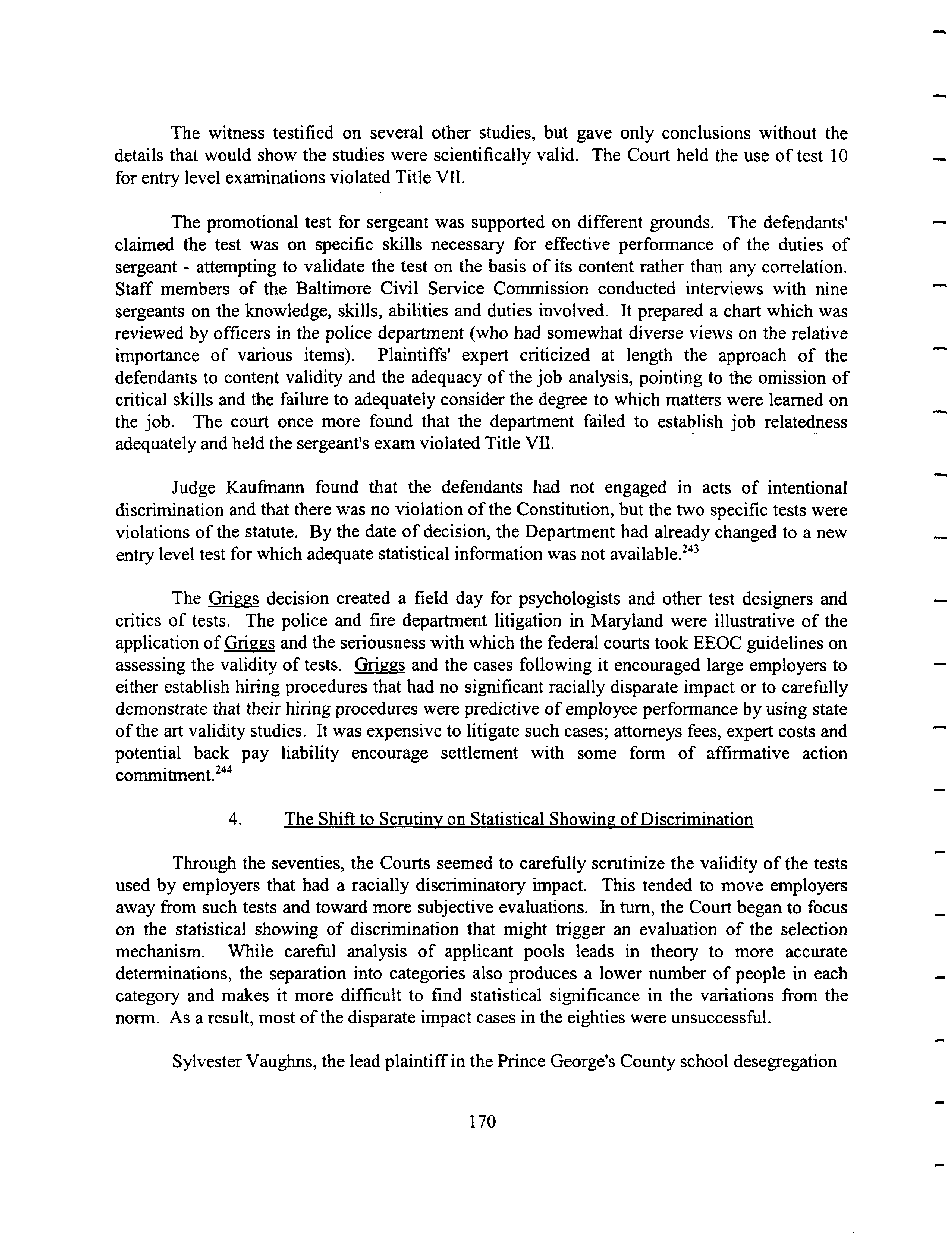|
The witness testified on several other studies, but gave only conclusions without the
details that would show the studies were scientifically valid. The Court held the use of test 10
for entry level examinations violated Title VII.
The promotional test for sergeant was supported on different grounds. The defendants'
claimed the test was on specific skills necessary for effective performance of the duties of
sergeant - attempting to validate the test on the basis of its content rather than any correlation.
Staff members of the Baltimore Civil Service Commission conducted interviews with nine
sergeants on the knowledge, skills, abilities and duties involved. It prepared a chart which was
reviewed by officers in the police department (who had somewhat diverse views on the relative
importance of various items). Plaintiffs' expert criticized at length the approach of the
defendants to content validity and the adequacy of the job analysis, pointing to the omission of
critical skills and the failure to adequately consider the degree to which matters were learned on
the job. The court once more found that the department failed to establish job relatedness
adequately and held the sergeant's exam violated Title VH
Judge Kaufmann found that the defendants had not engaged in acts of intentional
discrimination and that there was no violation of the Constitution, but the two specific tests were
violations of the statute. By the date of decision, the Department had already changed to a new
entry level test for which adequate statistical information was not available.243
The Griggs decision created a field day for psychologists and other test designers and
critics of tests. The police and fire department litigation in Maryland were illustrative of the
application of Griggs and the seriousness with which the federal courts took EEOC guidelines on
assessing the validity of tests. Griggs and the cases following it encouraged large employers to
either establish hiring procedures that had no significant racially disparate impact or to carefully
demonstrate that their hiring procedures were predictive of employee performance by using state
of the art validity studies. It was expensive to litigate such cases; attorneys fees, expert costs and
potential back pay liability encourage settlement with some form of affirmative action
t -)AA
commitment.
4. The Shift to Scrutiny on Statistical Showing of Discrimination
Through the seventies, the Courts seemed to carefully scrutinize the validity of the tests
used by employers that had a racially discriminatory impact. This tended to move employers
away from such tests and toward more subjective evaluations. In turn, the Court began to focus
on the statistical showing of discrimination that might trigger an evaluation of the selection
mechanism. While careful analysis of applicant pools leads in theory to more accurate
determinations, the separation into categories also produces a lower number of people in each
category and makes it more difficult to find statistical significance in the variations from the
norm. As a result, most of the disparate impact cases in the eighties were unsuccessful.
Sylvester Vaughns, the lead plaintiff in the Prince George's County school desegregation
170
�
|

